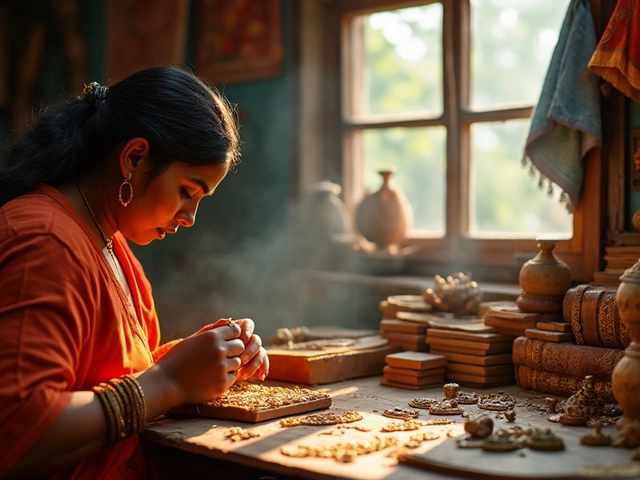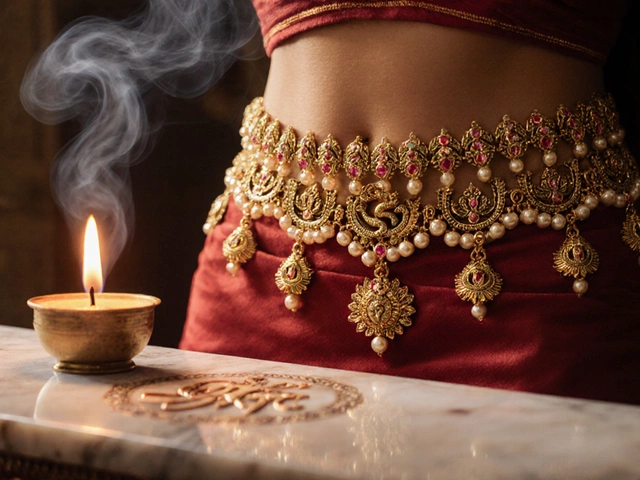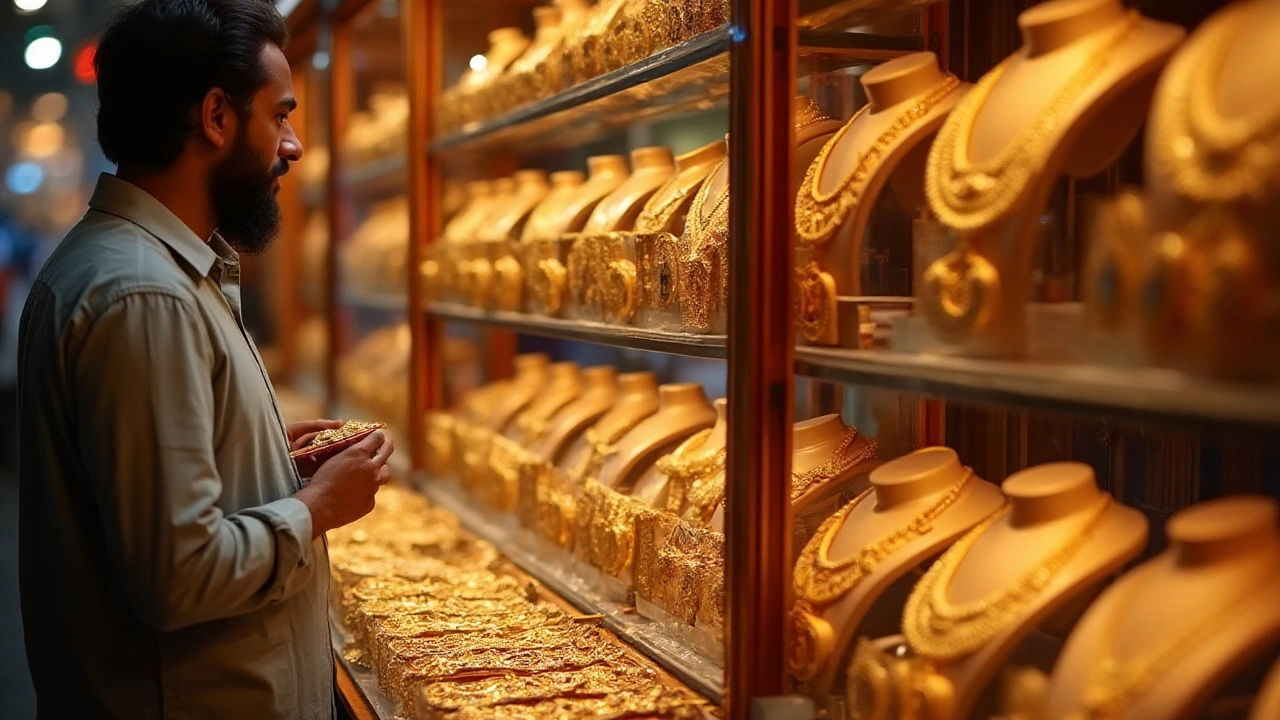
Gold jewelry has been cherished for centuries not only for its beauty but for its enduring value. Whether a simple gold chain or an intricate heirloom piece, understanding what makes jewelry hold its worth can turn a simple purchase into a long-term asset.
For anyone considering investing in gold jewelry, knowing about the purity of gold and the timeless designs that tend to retain value is essential. This knowledge paves the way for making smart choices that are both personally and financially rewarding. Let's explore what makes gold jewelry a valuable addition to any collection.
- Understanding Gold Purity and Karats
- Classic Gold Jewelry Pieces
- Factors Influencing Value Retention
- Tips for Investing in Gold Jewelry
- How Market Trends Affect Gold Jewelry
- Proper Care to Maintain Jewelry Value
Understanding Gold Purity and Karats
When diving into the world of gold jewelry, one of the first things to understand is the concept of gold purity and the measurement standard known as karats. Gold, in its purest form, is referred to as 24-karat. However, pure gold is too soft for crafting durable jewelry, which is why it is often mixed with other metals to enhance its strength. This is where the concept of karats comes into play. A karat is a unit that tells us what proportion of the piece is made from pure gold. For instance, 18-karat gold contains 75% pure gold, with the remaining 25% made up of other metals like silver, copper, or nickel. The blend not only impacts the strength and durability of the jewelry but also its hue and price.
Another important aspect to consider when assessing the value of a piece of gold jewelry is its karat rating. While 24-karat gold rings with the allure of utmost purity, the market sees a significant number of high-value pieces in the 18-karat and 14-karat categories. These variants offer a wonderful balance between aesthetic appeal and practicality, making them ideal choices for those who wear their pieces frequently. An interesting note to consider is how these different karat values affect price.
According to the World Gold Council, the demand for gold jewelry is largely influenced by its cultural and aesthetic value, rather than purity alone.So, the need to understand karats becomes not just a matter of finance, but of personal choice as well.
Notably, different countries and cultures have varying preferences and standards when it comes to the purity of gold. For instance, in India, a major market for gold, 22-karat gold is especially popular due to its lustrous appearance and significant gold content, making it a symbolically valuable choice for weddings and other ceremonies. Meanwhile, in Italy and other parts of Europe, 18-karat gold sets the standard for luxury and is commonly used by top designers for its perfect blend of beauty and resilience. Each karat level has its own unique story and significance, contributing to the rich tapestry of global gold jewelry designs.
For those interested in investing in jewelry, understanding these variations in purity and karat grading is crucial for making informed decisions. Consideration of factors such as these helps in not only assessing aesthetic beauty but in appreciating the cultural significance and economic potential of different karat levels. With gold prices fluctuating based on market conditions, such insights grant broader perspectives and help navigate purchasing decisions with an eye for both personal and financial gain.
Classic Gold Jewelry Pieces
When it comes to gold jewelry that truly retains its value, certain classic designs stand out. These timeless pieces not only appeal aesthetically but also maintain their allure in the gold market. The elegance of a plain gold band can never be underestimated, making it a perennial favorite for weddings and anniversaries. These rings, often crafted in higher karats like 18k or 22k, are highly sought after since they provide more gold content and an excellent assurance in terms of value retention.
Another classic piece that resonates with many collectors and wearers is the gold chain. Its versatility and durability have cemented its place as a staple in jewelry collections worldwide. Both men and women appreciate the simplicity and sophistication a chain offers, whether worn alone or with pendants. The sturdy curb chain or the elegant Figaro chain designs are immensely popular due to their robust build and classic appeal. They rarely go out of style, keeping their worth across generations.
The appeal of gold bangles should not be overlooked either. In many cultures, gold bangles symbolize prosperity and tradition, often handed down through generations. These pieces often feature detailed craftsmanship, which can further increase their worth. Diamonds or other precious stones can also accentuate these bangles, adding to their appeal and value. Simple solid gold bangles, however, remain a cornerstone of classic design due to their understated elegance and substantial investment value.
Renowned jeweler Jeanine Hsu once said, "A piece of jewelry should not only be aesthetically pleasing but timeless. Its value is in its enduring design and how it resonates with the wearer generation after generation."
Earrings, too, have their place in the category of classic gold pieces. From the minimalist gold hoops to tastefully designed studs, these pieces exemplify versatility and are often passed down as family heirlooms. The key to selecting valuable earrings lies in their quality of construction and gold purity. Many opt for 18k gold to ensure longevity and wearability, balancing daily use with the precious metal's intrinsic worth.
In recent years, there’s been a resurgence in gold medallion pendants. These pieces, whether engraved or inlaid with symbols and emblems, add a personalized touch to any jewelry collection. The unique blend of heritage and modern appeal makes them highly collectible. They are often crafted in high-karat gold, enhancing their standing as valuable pieces that maintain their price in the market.
| Type | Common Karats | Popularity |
|---|---|---|
| Gold Rings | 18k, 22k | High |
| Gold Chains | 14k, 18k | Very High |
| Gold Bangles | 18k, 24k | High |
| Gold Earrings | 18k | Medium |
| Gold Pendants | 18k, 22k | Rising |
Ultimately, investing in classic gold jewelry designs is as much about personal preference as it is about financial savvy. These pieces endure through fashion's ebbs and flows, often appreciated not just for their intrinsic worth but for their ability to carry meaning and memories across time. They are personal investments that, if chosen wisely, yield dividends in value retention and timeless wearability.
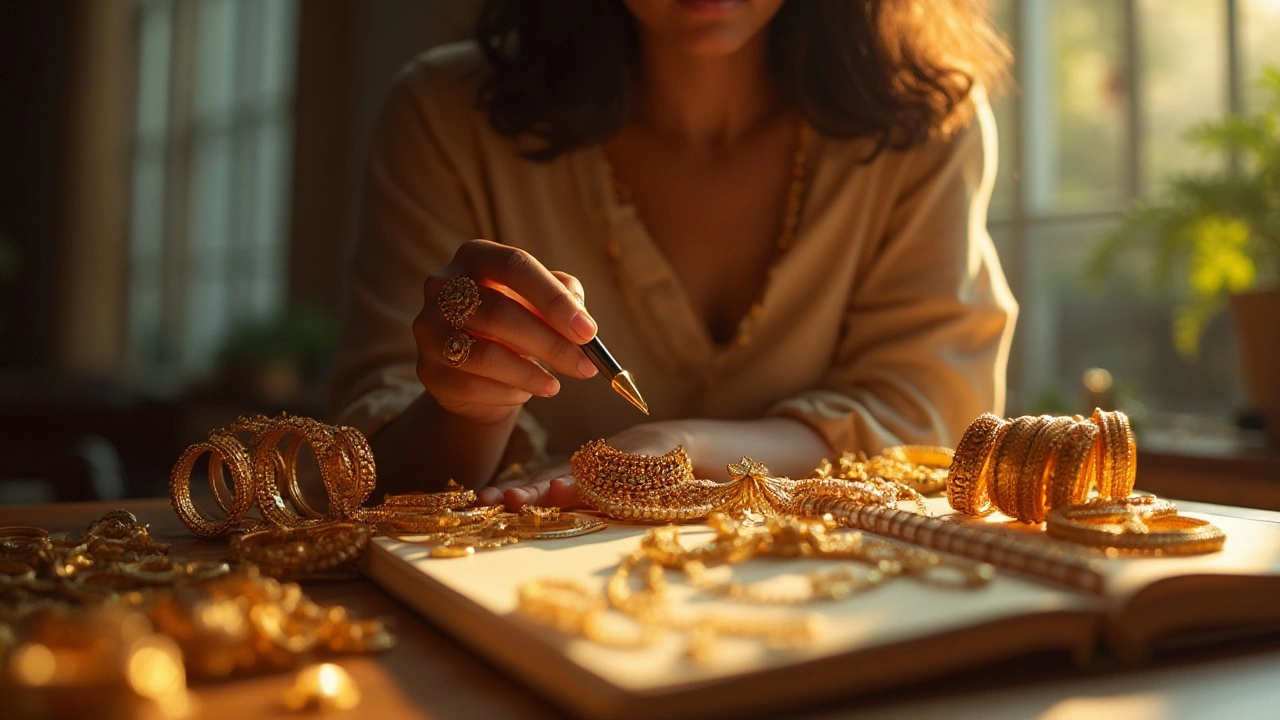
Factors Influencing Value Retention
When considering investment in gold jewelry, understanding what influences its ability to hold or even increase in value is vital. These factors can range from the intrinsic properties of gold itself to external market influences and even the craft and heritage of the piece. First and foremost, the purity of gold, measured in karats, plays a fundamental role. The higher the karat, the greater the percentage of gold compared to other metals, with 24-karat representing pure gold. However, pure gold is soft, making 18-karat and 14-karat gold more popular for jewelry due to their durability while still holding significant value. The design and craftsmanship also significantly impact the value. Timeless and classic designs such as simple bands or traditional patterns tend to retain their appeal and therefore maintain their market value better than trendy or avant-garde designs that may fall out of favor.
The market demand for certain styles or types of jewelry frequently dictates their value retention. Trends in jewelry come and go, but pieces that embody classic elegance or have a historical significance often remain in demand. Notably, collector pieces and limited-edition collections can see substantial appreciation in value over time, driven by rarity and demand among collectors. Another element to consider is the jeweler's reputation. Jewelry from famed brands or designers often sees better value retention due to their association with quality and prestige. Investing in jewelry from a well-respected brand can provide assurance, much like purchasing art from a renowned artist.
Economic Factors
External economic factors such as inflation rates, currency fluctuations, and geopolitical stability also affect gold jewelry's value. During times of economic uncertainty, gold is often seen as a safe investment, hence increasing the demand and value of gold jewelry. This is where the concept of jewelry as 'wearable wealth' becomes prominent, offering both aesthetic pleasure and financial security. Additionally, the broader gold market plays a crucial role. As a commodity, gold itself has a fluctuating market value that impacts jewelry prices. The higher the gold prices, the more valuable gold jewelry tends to become, providing opportunities for investors to benefit from market shifts."Gold is a way of going long on fear," says traders and authors Jim Grant, referring to gold's value as a hedge against economic instability.These insights highlight the multifaceted nature of investing in gold jewelry, balancing aesthetic and financial considerations.
Tips for Investing in Gold Jewelry
When it comes to investing in gold jewelry, selecting pieces that will stand the test of time both in style and value is key. First and foremost, understanding the concept of 'karats' can make all the difference. Gold's purity is measured in karats, with 24 karats being pure gold. However, pure gold is quite soft, so it is often alloyed with other metals to enhance its durability. A balance must be achieved between purity and practicality, making 18k or even 14k gold popular choices for those seeking a blend of elegance and resilience. An informed investor should always check for hallmarks on their pieces, as these small imprints are assurances of authenticity and purity. This precaution ensures you’re getting precisely what you’re paying for, which can play a crucial role in preserving the piece's value in the future.
In addition to the technicalities of gold purity, style choices can significantly affect a piece's staying power in the market. Classic designs like gold chains, bangles, and stud earrings have proven time and again to retain their appeal, outlasting fleeting trends. Such pieces are versatile, easily matching various outfits and occasions, which enhances their desirability. Consider also custom designs or limited editions, as they often carry an exclusive allure that attracts collectors and investors alike. Keep an eye on market trends, but be wary of transient fads that might quickly fall out of favor. As the saying goes, "Fashion fades, but style is eternal." Thus, investing with timelessness in mind can often reap greater rewards.
Another critical aspect of investment jewelry is provenance. Jewelry pieces with a clear history or those once owned by notable figures tend to retain higher value. Provenance provides an intangible allure that often captivates buyers. It is not uncommon for auction houses to list jewelry pieces with detailed histories, revealing not just their past ownership but also how they fit into larger cultural contexts. When exploring potential investments, consider seeking pieces with rich backstories, accompanied by documented evidence. This can be particularly enticing to buyers and collectors, making it a worthwhile consideration during the investment phase.
Cited from renowned gemologist and jewelry expert, Liz Taylor: "Investing in gold jewelry requires not only admiration for its beauty but a strategic approach to design, quality, and provenance."
A successful investment strategy also involves consistent market research. Gold prices fluctuate, impacted by various economic factors such as inflation and currency devaluation. To stay ahead, consistently track these changes and adjust your investments accordingly. One approach is to diversify your portfolio, combining pure gold bullion investments with a selection of well-chosen jewelry pieces. This not only maximizes growth opportunities but also mitigates risks. Building relationships with reputable jewelers and appraisers can offer you insights into market dynamics and potential investment opportunities you might have otherwise overlooked.
Lastly, consider the aspect of maintenance. Caring for your jewelry to prevent tarnishing or damage is vital for maintaining its value. Regular cleaning, proper storage, and professional inspections are common practices to uphold. The way you care for your jewelry can, to a significant degree, impact its long-term value. A piece kept in pristine condition is naturally more appealing to potential buyers or family members to whom it might be passed down. Investing time and effort into preserving your collection can significantly enhance its longevity and worth.
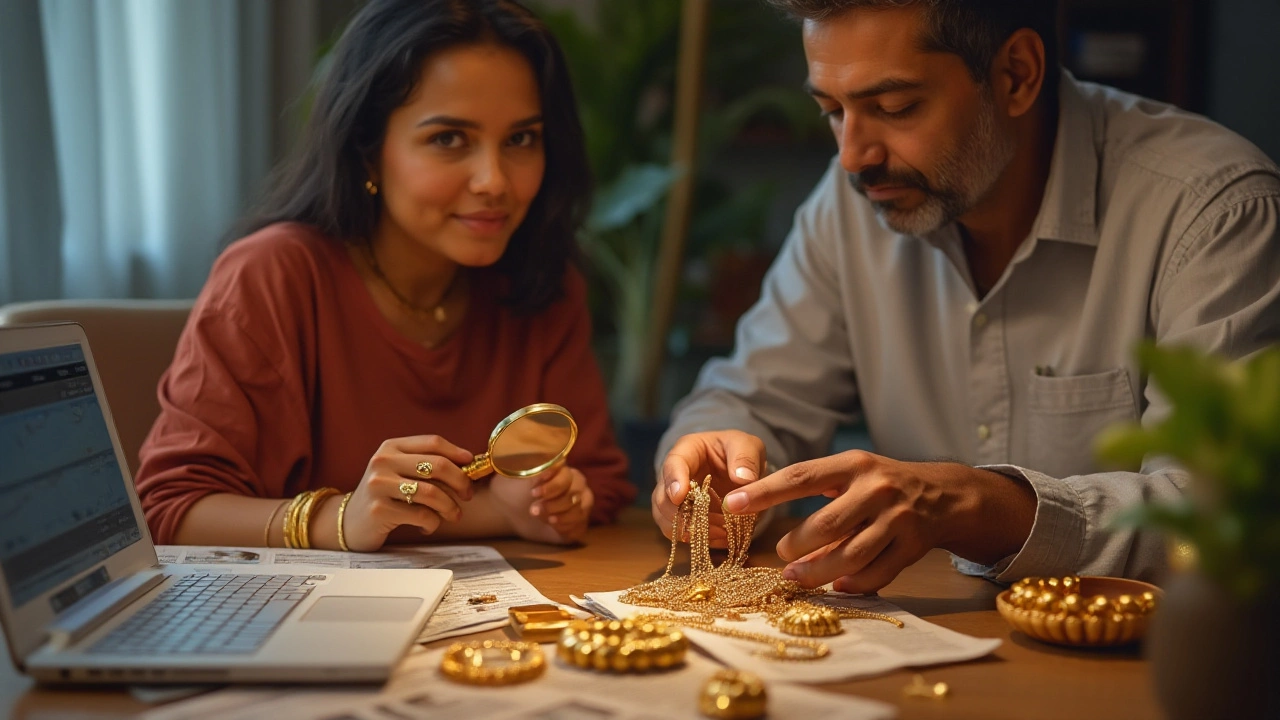
How Market Trends Affect Gold Jewelry
When it comes to the dynamic world of gold jewelry, market trends play a pivotal role in influencing the value and demand for these exquisite pieces. Trends don't just sway fashion enthusiasts; they can significantly affect the financial worth of your jewelry investments as well. One of the most direct ways market trends influence gold jewelry is through the fluctuating price of gold itself. World events, economic stability, and market speculation all contribute to how the price of gold is valued on any given day. Notably, during times of economic uncertainty or geopolitical tension, investors often turn to gold as a 'safe haven,' leading to increased demand and rising prices.
Beyond the raw material cost, trends in design and aesthetics can dramatically impact what remains in vogue. For example, vintage-inspired designs have seen a resurgence in popularity, which has brought renewed attention to older pieces that might have otherwise been overlooked. Similarly, sustainable and ethically sourced gold has garnered interest, affecting consumer choices and potentially their willingness to pay a premium for such pieces. Knowing these trends can help investors and jewelry lovers make informed decisions about when and what to buy.
The rise of digital platforms has also reshaped how we buy and sell gold jewelry. Online auction houses and direct marketplaces mean that consumers have more access than ever to a variety of options from across the globe. This accessibility has broadened the market and injected fresh ideas and styles, as seen in the rapid popularity of minimalist and geometric gold jewelry pieces.
"Market forces can greatly impact the desirability and, by extension, the value of gold jewelry," notes industry expert, Emma Harrison. "Keeping an eye on these trends ensures you're not only buying what looks good but what retains its value over time."
Another aspect to consider is the cultural and seasonal trends that affect demand. Jewelry has long been part of cultural rituals, and during peak seasons like weddings or festivals, the demand for gold jewelry surges, sometimes causing temporary spikes in prices. Additionally, celebrity endorsements and the work of influential designers can spark sudden interest in specific styles, creating a ripple effect throughout the market.
Understanding how these diverse market trends can affect your gold jewelry's worth is key. By remaining aware and adaptive, you can significantly enhance both the aesthetic pleasure and the economic value your jewelry brings you over time.
Proper Care to Maintain Jewelry Value
Preserving the intrinsic and aesthetic value of your gold jewelry involves a meticulous approach to care and maintenance. While gold is resilient, it requires regular attention to ensure its enduring luster and worth. Dust and pollutants can dull the shine of your pieces, while chemicals from everyday products can cause lasting damage. To prevent this, it's essential to clean your gold jewelry periodically, employing gentle cleaning agents or solutions specifically designed for gold. A soft cloth can help polish your pieces without scratching them, ensuring the purity and shine of your jewelry are preserved.
Storage plays a pivotal role in maintaining jewelry value. Gold items should be stored separately to prevent scratching. Using soft cloth pouches or lined jewelry boxes can protect them from environmental damage. Always ensure your storage areas are dry, as moisture can weaken gold's integrity over time. For valuable items, insurance is something every owner should consider, adding an extra layer of protection against unforeseen events that could detract from their value.
Another consideration is wearing practices. Everyday wear may not be ideal for delicate or high-karat gold pieces. It is wise to remove jewelry during activities that expose it to chemicals, like swimming pools or cleaning chores. Remember, gold is malleable and can deform if subjected to undue pressure or impact. Gold jewelry is also sensitive to drastic temperature changes, which can cause it to expand or contract, potentially weakening settings or causing stones to loosen. Rotating pieces can also help by limiting exposure to daily wear and tear, prolonging their lifespan.
Regular professional inspections are a must. Jewelers can catch issues that an untrained eye might miss, such as loose stones or worn prongs, which could lead to losses if untreated. Many jewelers offer cleaning services and maintenance once a year, which serves to reassess the sturdiness of the pieces and the security of clasps and settings. This retains both the aesthetic and market value of your investment jewelry.
"Jewelry isn't just metal and stones; it's a snapshot of history, a relic of personal journeys. Taking care of it ensures these stories are never lost." – Renowned Jeweler Emily Roth
With proper care, your gold jewelry can indeed last generations. It is not merely about aesthetics or personal attachment; it is also about ensuring your assets remain valuable should you ever wish to sell or exchange them. A well-maintained piece is more likely to fetch a price that reflects its full worth, attesting to the attention and care you invested in its preservation. This commitment to detail and protection can truly differentiate the avid collector from a casual owner and can make every classic design in your collection a timeless treasure.


